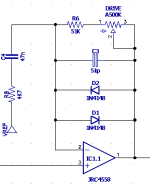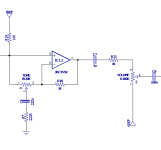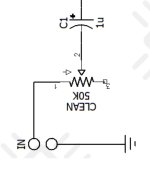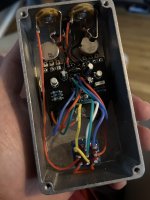jdduffield
Member
I’m new to this and wondering if there is a such thing as a custom-range potentiometer. For example, if I bought a B100k and wanted to configure it so that at the bottom of the range it started at 12k resistance and at the top of the range it landed on 88k resistance.
My uneducated guess would be that I’d need to add a resistor or trim pot on both sides of it to define its range. For example, a trim pot on both sides hidden from the user but adjustable at the circuit board could let me configure it on the fly to try different ranges. Am I close or way off?
My uneducated guess would be that I’d need to add a resistor or trim pot on both sides of it to define its range. For example, a trim pot on both sides hidden from the user but adjustable at the circuit board could let me configure it on the fly to try different ranges. Am I close or way off?






